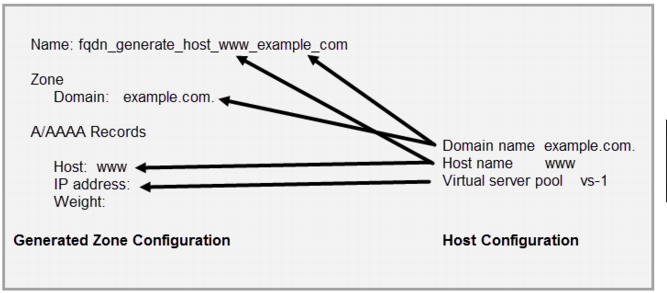Configuring hosts
Host settings are used to form the zone configuration and resource records in the generated DNS zone used for global load balancing.
Figure 48 shows how the host settings are mapped to zone settings and resource records. Domain and hostname are used in both the configuration and the generated configuration name. The IP address and weight are derived from the virtual server pool.
Before you begin:
• You must have created the global virtual server pools you want to use.
• You must have Read-Write permission for Global DNS Server settings.
After you have created a host configuration object, it can be used to form the zone and resource records in the generated DNS zone configuration.
Before you begin:
• You must have Read-Write permission for Global DNS Server settings.
To configure a host:
1. Go to Global Load Balance > FQDN Settings.
2. Click the Host tab.
3. Click Add to display the configuration editor.
4. Complete the configuration as described in
Table 36.
5. Save the configuration.
Table 36: Host configuration
Settings | Guidelines |
Name | Configuration name. Valid characters are A-Z, a-z, 0-9, _, and -. No spaces. Note: After you initially save the configuration, you cannot edit the name. |
Host Name | The hostname part of the FQDN, such as www. |
Domain Name | The domain name must end with a period. For example: example.com. |
Virtual Server Pool | Select a virtual server pool configuration object. |


